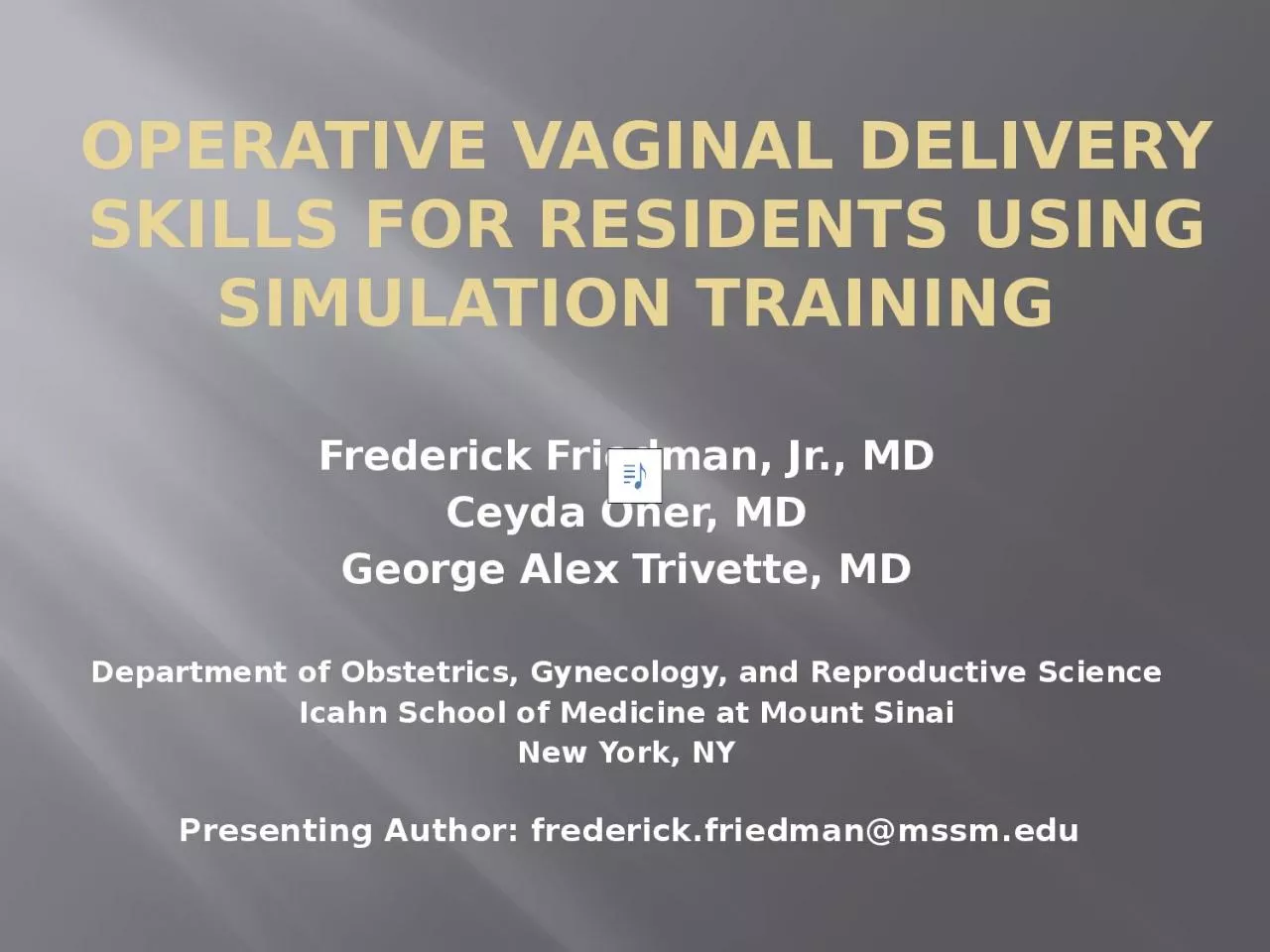

Frederick Friedman Jr MD Ceyda Oner MD George Alex Trivette MD Department of Obstetrics Gynecology and Reproductive Science Icahn School of Medicine at Mount Sinai New York NY Presenting Author frederickfriedmanmssmedu ID: 1048403
Download Presentation The PPT/PDF document "Operative Vaginal Delivery Skills for Re..." is the property of its rightful owner. Permission is granted to download and print the materials on this web site for personal, non-commercial use only, and to display it on your personal computer provided you do not modify the materials and that you retain all copyright notices contained in the materials. By downloading content from our website, you accept the terms of this agreement.
1. Operative Vaginal Delivery Skills for Residents using Simulation Training Frederick Friedman, Jr., MDCeyda Oner, MDGeorge Alex Trivette, MDDepartment of Obstetrics, Gynecology, and Reproductive ScienceIcahn School of Medicine at Mount SinaiNew York, NYPresenting Author: frederick.friedman@mssm.edu
2. Introduction:The frequency of operative vaginal deliveries (OVDs) has been declining throughout the United States. Several efforts are underway to reverse this trend with the hope of reducing cesarean sections and improving patient outcomes. For low frequency procedures, simulation has become the standard method of teaching. We describe a program consisting of a didactic session with a hands-on practical to improve the knowledge base and skill set of residents for OVDs.
3. MethodsObstetrics and Gynecology residents at a single Institution were recruited for participation. Subjects provided baseline survey data including demographics, clinical experience (with OVDs), and subject knowledge. Following a didactic session, a hands-on practical was conducted using a mannequin. After the simulation, participants completed a post-training quiz and survey.
4. ResultsA total of 22 residents completed the study. There was significant improvement in knowledge, as tested by pre-and post-didactic session scores (p<0.0001). This was observed regardless of the training level or experience of the resident. With a single hands-on practical half of residents were able to independently apply correctly the forceps, and 82% were able to employ the correct vector. Similarly 90% of residents used proper technique with vacuum-assisted vaginal delivery.
5. Exam Scores: Pre vs Post Didactic
6. Exam Results Pre & Post Didactic
7. Exam Results by Resident Year
8. Exam Results by Resident Experience
9. ConclusionOur educational program improved the knowledge base and skill set of residents for OVDs. All participating residents found this program to be worthwhile and enjoyable. Future efforts will involve repetition of the program to determine knowledge retention. We hope that the skills learned translate to improved performance and confidence in managing patients, and improved patient outcomes.